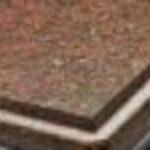Marble countertops and floors can add so much beauty and elegance to a home. However, because marble is a very porous material, it can stain easily. Removing the stain from marble is not a difficult one, but it does require time and patience. You can create a material called a poultice which will actually re-absorb the stain. Here are some tips and guidance on creating your own poultice and successfully removing stains from marble.
Identify the Stain
Before you create your own poultice to remove stains from marble, you must determine what composes the stain itself. This may not be an easy task especially if you weren’t the one to cause the stain.
Stains generally fall into the following common categories:
1. Oil based stains – such as cooking oil, food stains, grease
2. Metal stains – caused from iron, copper, etc.
3. Organic stains – tobacco, fruit, cosmetics
4. Biological stains – mildew and algae
5. Ink stains – pens, markers
Once you’ve determined the type of stain, then your next step is to create a poultice based on that stain type. To see what materials to use in the poultice, go to www.eurotechmarble.com/removingstains.htm where a helpful chart will show you what chemicals to use for each type of stain.
If you are unable to identify the exact cause of the stain, you may need to perform a patch test which means to apply several different types of poultices until removal of the stain occurs.
Make a Poultice
Basically, a poultice is a soft mass comprised of different agents to help remove stains. In other words, a poultice can be made by taking a paper towel, cotton ball or napkin and soaking it in a solvent like ammonia or alcohol. This poultice is then applied to the stain in the marble and left sitting anywhere from an hour or more until it actually re-absorbs the original stain.
Poultices can be made in many different ways using chemicals that are known to clean, or powders such as clays, talc and chalk. Clays and diatomaceous earth usually are better components to include in your poultice but be sure and stay away from fullers earth that contain acidic chemicals. To get more information on diatomaceous earth and fullers earth, check with your local hardware store, or even at Lowe’s or Home Depot.
Apply the Poultice
Now it’s time to apply your poultice mixture to the stain. Simply wet the area that is stained with distilled water. Apply the poultice to the stain and then cover with plastic wrap. Tape down the plastic wrap making sure that no air can come in contact with the poultice which must dry in order to remove the stain from the marble. Complete drying can take anywhere from several hours to a couple of days.
After the poultice has dried, remove it from the marble. If the stain is completely gone, then take some more distilled water and wipe the area of the marble dry with a soft cloth.
If the stain is still present, apply more of the poultice mixture and repeat the process. Sometimes it will be necessary to apply several poultice treatments to completely remove the stain.
Sources: www.eurotechmarble.com/removingstains.htm, www.hometips.com/repair/countertops_surfaces/stainremoval_marble.html






